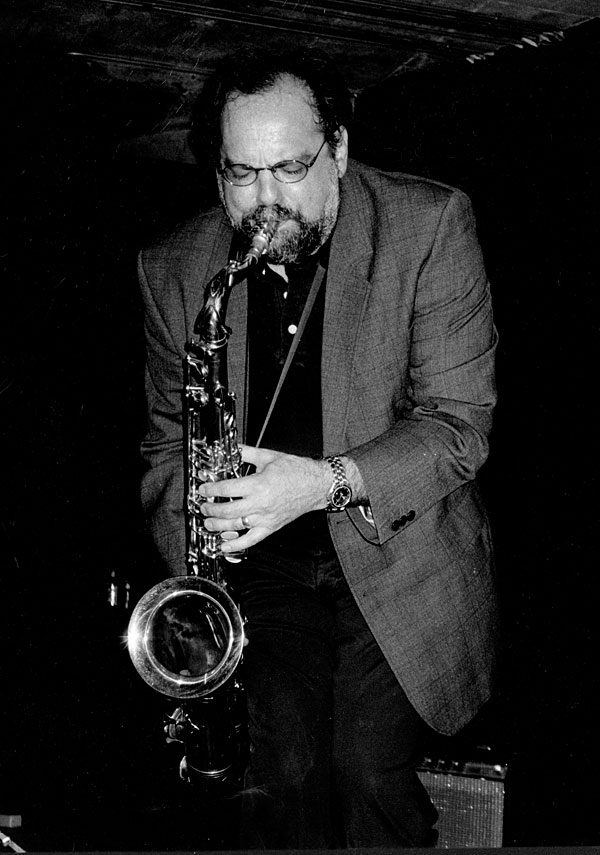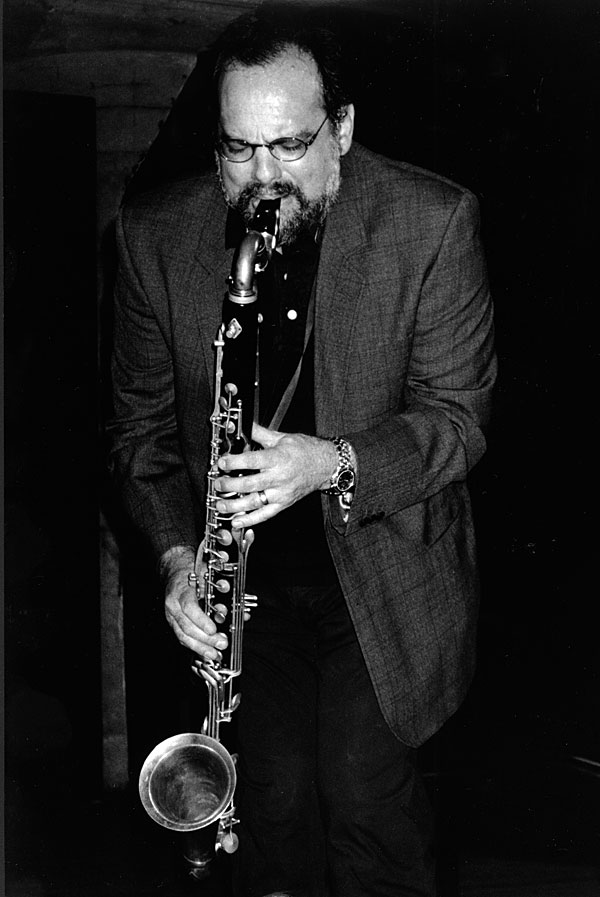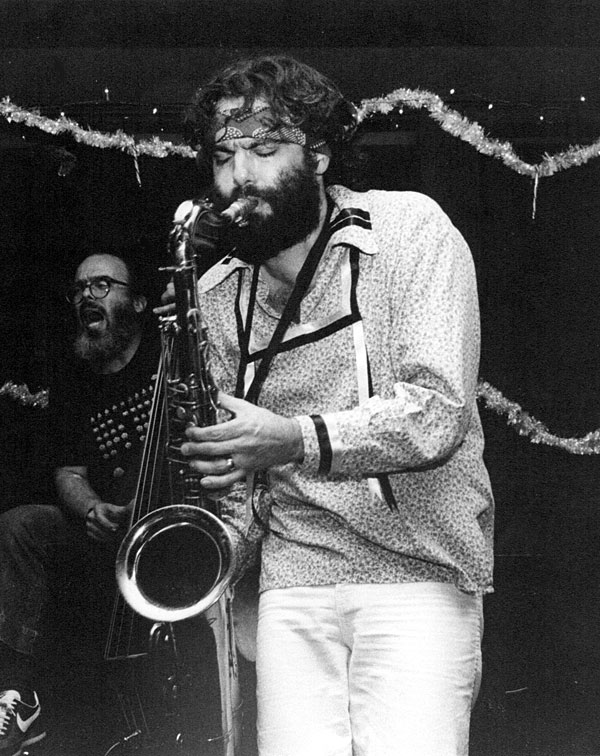| Columns Retired Columns & Blogs |
THanks so much for this excellent article. I have several years ago purchased some of the K2B2 CDs, They are wonderful. I am glad to learn more about Mr Krystall.
Krystall: We started out in 1979, and we would book four hours of studio time and record a whole album. If you could edit, you could make a record—razor blade, cut the tape. The greatest records ever made were done by people with watches. The session is called, people show up at the same time, they record it, and they leave. Everything that's done is done to the clock. When you have three hours to do it, all of a sudden you become really focused. Money is at stake, and everyone's career, so you'd better get it right. There is an energy that comes from that.
Matson: It seems the pool of great musicians in LA has gotten smaller over the years.
Krystall: The reason is that the musicians don't come from orchestras and bands anymore. They come from schools. The people I played with early on had played with Les Brown, Tommy Dorsey—they had worked with these guys for 10 years on the road. Then they finally settled in LA. They were pros before they got to the studios.
Matson: Name a few player-composers from generation X, Y, or Z who are pushing jazz music forward.
Krystall: Jeff Lederer in Brooklyn, whom I've known since he was 13 and I gave him alto sax lessons. Jeff is devoted to the music of Albert Ayler and Eric Dolphy. Kamasi Washington in LA is a versatile tenor player whose arranging is funky and rhythmic, like taking Motown to a new level. Ravi Coltrane has a sound that's very dark and burnished. Ravi carries on his father's musical tradition, and in his own, original music is always progressive.

Matson: Name some of your favorite recordings.
Krystall: The recordings that affected me deeply are ones where I strove for their sound. Certain sounds command me to imitate them; others are just noise. You play a record that takes over your life, then you've got to do that—that's where it's at. When I heard Herbie Nichols, when I heard Eric Dolphy, John Coltrane, Ben Webster. Stravinsky's Rite of Spring on Everest. Miles on Prestige.
Matson: How did you get interested in recording music?
Krystall: The first time I was recorded professionally was at Wally Heider's, in the RCA building on Sunset. I was 17 and was in a folk group with guitar and bass, playing clarinet. Danny Wallin was the engineer. I heard the playback and was astounded I could sound that good, with Danny's help. I'd work in that building 7 years later for Harry Nilsson.
After gaining some experience in the studio, playing music and hearing it played back, I figured out how to "stick to the tape," as Buell put it. Gene Cipriano is the ultimate example of this. Whether he's playing oboe or sax, his sound really sticks to the tape. It's focused, yet warm and appealing. Listen to the oboe solos on Sinatra's "It Was a Very Good Year."
I mostly played dramatic clarinet solos for TV films and series and had the sound I wanted in my ear, but getting on the tape depended on the microphone, how far away it was, and if I could "find" the mike no matter where it was. The best recording artists have a relationship to the mike.
Especially Coltrane. He would play on the left-hand side of the microphone, and when he would get to the high point of a solo, he would move and play directly into the mike with the bell of his horn. That's one reason why his solos sound so fantastic. It wasn't an accident, it wasn't just his playing, it was also his microphone technique. Finding the sweet spot. After gaining some experience in the studio, playing music and hearing it back, I figured out how to stick to the tape.
I think instrumentalists are constantly adjusting their sounds to the inadequacies of the rooms they're in. In most studios, the sound is flat and dull, so the sound of the horn isn't colored until it gets past the microphone. Then it's the engineer's job to color it how they see fit, for the mix.

Matson: You've worked with great classical musicians, most often, and most prominently, pianist Peter Serkin. What did you learn from him?
Krystall: Everything. I was teaching at Cal Arts in 1973, even though I was just 22: They needed a jazz teacher. We performed some Webern, and Peter Serkin was in the audience. Several years later, he called me up and said "Marty, you want to go on tour with Tashi?" (see sidebar). I said: "Hell, yeah." I had never played the tenor sax with that range of dynamics before.
Matson: It is the dynamics that are always the last thing to happen at recording sessions. People are struggling to get the notes and the rhythms. But without the dynamics, it's DOA. It will sound like a reading, like a demo.
Krystall: Yes, that's the last thing musicians see when they are sight-reading. When you have bigger budgets and more time, then there's lots of time for the dynamics. And in a jazz group, when you are improvising, the dynamics are the way you feel at the time.
Matson: You worked with Quincy Jones?
Krystall: Yes. In 1972, Freddie Myrow moved to LA to score Soylent Green. Buell recommended me to him, and he called me to audition for him at his MGM office. I brought all of my flutes, saxes, clarinets, and electronics and read some of his charts. He wanted flutes played through a ring modulator and Echoplex. This was before digital synthesizers, so the only electric effects in movie scores were usually played by electric guitars using their fuzz boxes, or woodwinds plugged into analog effects. He also needed a legit clarinetist for this film.
A week after the Soylent Green sessions, I got a call from bassist Ray Brown to play baritone sax on a Quincy Jones recording session for Aretha Franklin for her Atlantic LP, Hey Now Hey (The Other Side of The Sky) (SD 7265). All of the usual bari players were booked, so Ray called Marty Berman, the contractor for Soylent Green, for a recommendation.

That record date—my first union date—started by hanging out with Phil Woods at noon for a one o'clock start, drinking beer out of the Coke machine at the Record Plant for over 3 hours, waiting for Quincy to show up with the charts. We were already into 45 minutes of overtime and a dozen bottles when Quincy showed up at 4:45, called us to run it down, looked at the clock, and said, "Never mind, let's do Take One." The big band/horn section was overdubbing over Aretha and the rhythm section. I came in on my entrance, but no one joined me—they were counting rests. I was playing the bass line solo for two pages before the rest of the band came in. One take did it. J.J. Johnson was sitting directly behind me, parting my long hair with his fat sound. Then we recorded the other chart and were out by five o'clock—3 hours, 45 minutes of hanging out and 15 minutes of playing. My check was for $500. I wanted more record dates.
Matson: Tell us about playing with Zappa.
Krystall: In 1976, we did a radio broadcast with my band The El Monte Art Ensemble, and Zappa heard it. I had written a tune called "Igor's Blues." It was way out. He heard that and called me up and said "I want you to audition for my band." So I went to a studio on La Brea Avenue. Zappa wanted a horn section. The others were driving down from San Francisco, and they were late, so it was just me. I had all my horns, and he would hand me a guitar part and say: "Play this on the alto flute, play that on E-flat clarinet." It was a bitch! Some of the hardest music you'll ever see.
Zappa was a fantastic guitar player. He kept giving me guitar parts and having me play them on all these different instruments. I nailed them all—I wanted the gig. I didn't miss a fucking note, in unison with him on guitar. Then we played the blues; we were just jamming. We played until two in the morning. Finally, the horn players showed up, and they couldn't play, they couldn't even read music. Zappa said: "They're no good." I said, "Well, I'm ready Frank, when do we leave?" And he said: "Sorry man, I've decided not to take horns. But you hold the world record for sight-reading my music."

THanks so much for this excellent article. I have several years ago purchased some of the K2B2 CDs, They are wonderful. I am glad to learn more about Mr Krystall.

A.B. Spellman's Black Music: Four Lives was among assigned books for a college course in the 70's and since then I've been fascinated by the music of Herbie Nichols -- by far the least well known among the four musicians profiled. It's an incredibly sad story that this incredible composer received so little attention during his lifetime and left so few recordings. (Note to Don Was & Joe Harley: please reissue Nichols Blue Notes!!!)
Fortunately musicians like Marty Krystall have recorded many Nichols compositions over the years, and hopefully will continue to do so with the passing of Rudd and Neidlinger.
Aside from his appearances with Neidlinger, I was not familiar with Krystall's work and looking forward to checking out his album with Tashi just ordered on Discogs.
Haven't heard several on the list but personally would've added wonderful The Happenings trio release with Krystall, Neidlinger and Howard Alden.